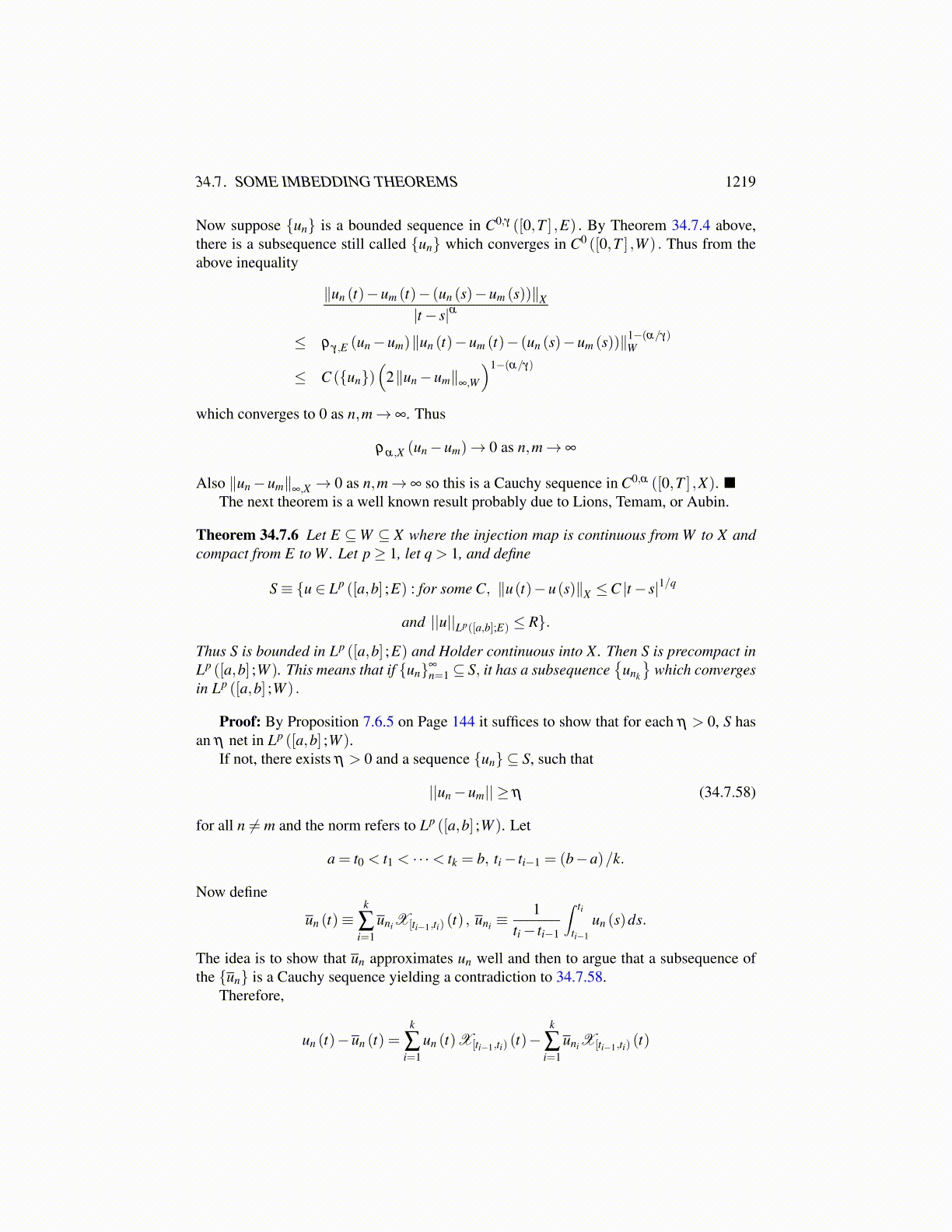
34.7. SOME IMBEDDING THEOREMS 1219
Now suppose {un} is a bounded sequence in C0,γ ([0,T ] ,E) . By Theorem 34.7.4 above,there is a subsequence still called {un} which converges in C0 ([0,T ] ,W ) . Thus from theabove inequality
∥un (t)−um (t)− (un (s)−um (s))∥X|t− s|α
≤ ργ,E (un−um)∥un (t)−um (t)− (un (s)−um (s))∥1−(α/γ)W
≤ C ({un})(
2∥un−um∥∞,W
)1−(α/γ)
which converges to 0 as n,m→ ∞. Thus
ρα,X (un−um)→ 0 as n,m→ ∞
Also ∥un−um∥∞,X → 0 as n,m→ ∞ so this is a Cauchy sequence in C0,α ([0,T ] ,X).The next theorem is a well known result probably due to Lions, Temam, or Aubin.
Theorem 34.7.6 Let E ⊆W ⊆ X where the injection map is continuous from W to X andcompact from E to W. Let p≥ 1, let q > 1, and define
S≡ {u ∈ Lp ([a,b] ;E) : for some C, ∥u(t)−u(s)∥X ≤C |t− s|1/q
and ||u||Lp([a,b];E) ≤ R}.
Thus S is bounded in Lp ([a,b] ;E) and Holder continuous into X. Then S is precompact inLp ([a,b] ;W ). This means that if {un}∞
n=1 ⊆ S, it has a subsequence{
unk
}which converges
in Lp ([a,b] ;W ) .
Proof: By Proposition 7.6.5 on Page 144 it suffices to show that for each η > 0, S hasan η net in Lp ([a,b] ;W ).
If not, there exists η > 0 and a sequence {un} ⊆ S, such that
||un−um|| ≥ η (34.7.58)
for all n ̸= m and the norm refers to Lp ([a,b] ;W ). Let
a = t0 < t1 < · · ·< tk = b, ti− ti−1 = (b−a)/k.
Now define
un (t)≡k
∑i=1
uniX[ti−1,ti) (t) , uni ≡1
ti− ti−1
∫ ti
ti−1
un (s)ds.
The idea is to show that un approximates un well and then to argue that a subsequence ofthe {un} is a Cauchy sequence yielding a contradiction to 34.7.58.
Therefore,
un (t)−un (t) =k
∑i=1
un (t)X[ti−1,ti) (t)−k
∑i=1
uniX[ti−1,ti) (t)